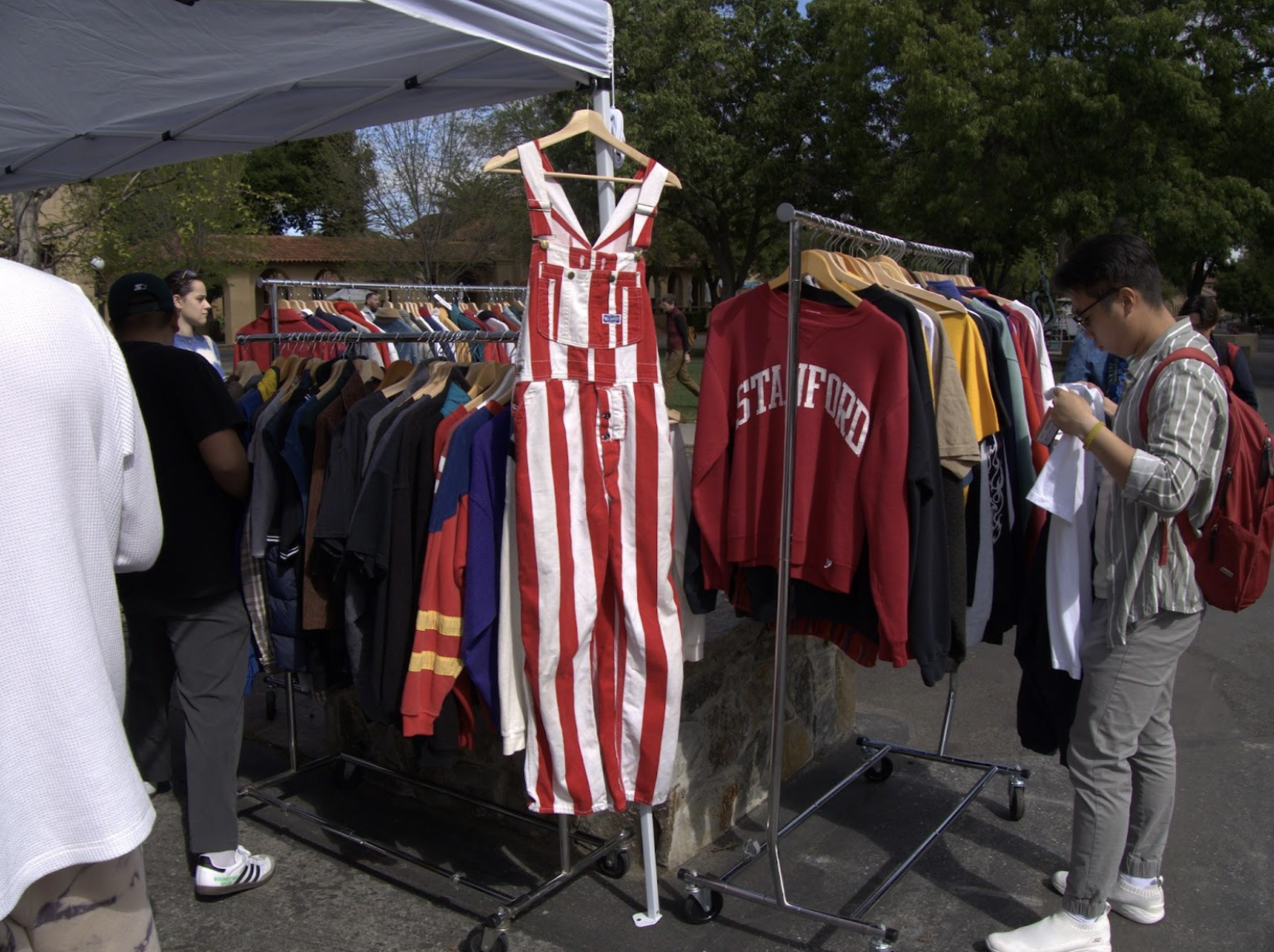On any normal afternoon, White Plaza is a bustling intersection for frantic students trekking to and from class, but, on Tuesday, it was a hub for slow fashion enthusiasts.
With widespread online trendiness of vintage styles surging on popular apps like TikTok, the time is ripe for local second-hand stores to thrive and develop a new sense of command within the fashion world. Blue Bin Vintage is certainly one of those stores playing their cards right, appealing to the young yet dominant consumer at Stanford.
The alluring appeal of second-hand clothing is its promise of an opportunity to find fresh, unique looks, support local businesses and contribute to a larger movement of sustainable and ethical fashion, says founders of Blue Bin Vintage Ahmad Amin, Jason To and Andrew Limos.
Founded in September 2021, Blue Bin Vintage is a Bay Area brand started by a group of fashion-loving friends that seeks to promote second-hand clothing, curate hand-picked vintage collections — including elevated basics, nostalgic pieces from and reminiscent of the 80’s-2000’s and lots of aged Stanford pieces — that offers something for all demographics.
“Our main goal is to have sustainable fashion, upcycled clothes. Give clothes a second purpose. You see at the malls a lot of fast fashion, and we’re just here to repurpose all these second-hand garments and give them another life,” Limos said.
Though Palo Alto is bustling with college students and resources, it offers few destinations to find both stylish and affordable looks, says Amin. The lack in the area pushed the founders to open their permanent location in downtown Palo Alto at 520 Bryant Street.
“We felt that Palo Alto is surrounded by so many great resources like Stanford and all the local high schools, but there’s nowhere to shop in the area,” Amin said.
The founders share a passion for second-hand clothing that goes beyond the surface-level hipster or retro style. For instance, for To, factors like durability and quality largely contribute to his decision to fill his closet with mostly second-hand items.
“I personally like second-hand a lot more, the quality of the clothing from back then is a lot better than it is now. You buy stuff today and wash it two to three times, and it’s almost done,” To said. “But the quality from then, you can wear it for years longer. I also like the styles a lot more.”
Students at the pop-up seemed to resonate with Blue Bin Vintage’s mission and vision and shared similar sentiments about the value of shopping second-hand.
“I really think that second-hand clothing is a really cool way to be able to get really nice clothes and give them a new life but not feed into the whole fast fashion thing. It’s also better for the environment,” Mikey Tutpaz ʼ25 said.
The pop-up event served not only as an opportunity for students to affordably populate their wardrobes with sharp new clothes but also as a reminder of the environmental impact of the fashion industry. At the check-out table, flyers were available for students to take home alongside their purchase with messaging urging sustainability.
The volume of clothing Americans throw away each year has doubled over the past twenty years from seven million to fourteen million tons. The source of this textile waste, the production process many call fast fashion, is a garment production strategy that centers on trend replication and utilization of low-quality materials to produce and appeal to mass demand.
Slow fashion, in contrast to fast fashion, encompasses an approach to fashion that considers the processes and resources required to produce clothing. The practice advocates for buying better quality garments that last longer and especially values the fair treatment of people, animals and the planet in the process. As fast fashion’s far more sustainable counterpart, slow fashion has been steadily gaining traction amongst young consumers for years. The practice of “thrifting” has grown into a social phenomenon and a cornerstone of popular culture while also gaining more environmental and ethical connotations in the public consciousness.
The founders expressed their gratitude for the high turn-out and hope that students continue to shop second-hand and support small businesses as they continue to recover from the pandemic.
Editor’s Note: This article is a review and contains subjective opinions, thoughts and critiques.
